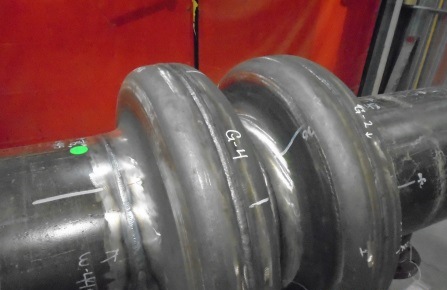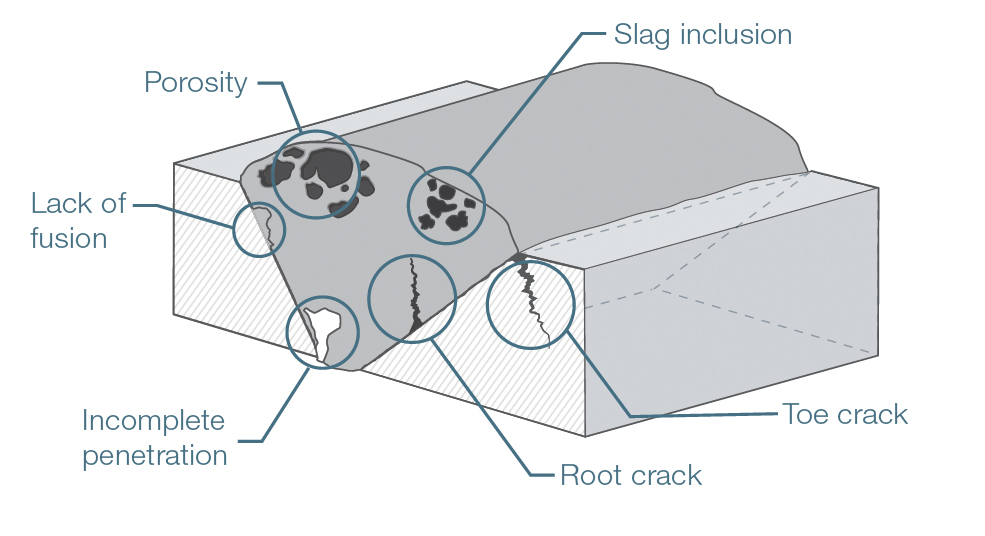Understanding the Importance of Welding Assessment in Ensuring Structural Integrity
Welding assessment plays a pivotal function in keeping structural stability within the building and construction industry, serving as an essential protect against possible failings. By systematically identifying typical flaws-- such as porosity and insufficient fusion-- assessments not only maintain top quality standards however likewise guarantee compliance with security policies. The effects of neglecting this vital procedure expand past prompt safety concerns, impacting both the durability of frameworks and the total reputation of organizations. As we explore the various evaluation methods and their benefits, the concern develops: what are real prices of forgeting this vital aspect of construction?
Duty of Welding in Building And Construction

In enhancement to structural applications, welding is essential in the construction of both elaborate and large-scale elements. It permits the modification of parts, enabling designers and engineers to bring their styles to fulfillment. The adaptability of welding techniques, including MIG, TIG, and arc welding, allows for the efficient signing up with of various products and densities, satisfying certain job demands.
Additionally, the development of welding innovations has actually caused enhanced effectiveness and precision in construction processes. Automated welding systems enhance performance while lowering human mistake, therefore advertising better results. As a result, the role of welding in construction expands past simple assembly; it is a vital consider guaranteeing the security, longevity, and total honesty of structures, underscoring its significance in the modern-day building landscape.
Typical Welding Issues
The integrity of bonded structures is considerably affected by the presence of flaws that can compromise their performance and safety and security. Common welding flaws consist of porosity, incomplete combination, undercutting, and slag incorporations, each of which can significantly influence the overall stamina and durability of welded joints.
Porosity happens when gas bubbles are caught in the weld metal, leading to reduced tensile stamina. Incomplete combination develops when the weld steel does not appropriately bond with the base steel, resulting in weak joints susceptible to failure.
Various other flaws, such as extreme spatter and misalignment, can likewise contribute to structural weaknesses. Identifying and addressing these defects during the welding procedure is important to make sure the dependability of the final structure. Awareness of these usual welding issues is crucial for examiners and engineers to keep the stability of welded structures and make certain long-lasting safety and efficiency.
Benefits of Welding Evaluation
Guaranteeing the honesty of bonded frameworks depends greatly on the performance of welding inspection procedures. The main advantage of welding examination is the early detection of possible defects, which can considerably minimize the risk of disastrous failures. By identifying problems such as fractures, incomplete combination, or porosity prior to they escalate, assessment procedures help maintain the security and reliability of structures.
Moreover, welding assessment enhances conformity with market standards and regulations. Sticking to these needs is important for ensuring and staying clear of legal effects that tasks fulfill needed security procedures. This compliance also fosters a culture of quality guarantee, promoting finest techniques amongst welding employees.
Additionally, normal assessment can cause cost financial savings in time. By mitigating the possibility of rework or repair services because of welding defects, organizations can assign resources much more efficiently, ultimately improving efficiency.

Assessment Strategies and Specifications
Reliable assessment strategies and standards are essential elements of keeping the stability of bonded structures. Usual inspection methods consist of aesthetic evaluation, ultrasonic screening, radiographic testing, and magnetic particle screening.
Aesthetic assessment is usually the primary step, allowing inspectors to recognize surface area flaws such as splits or improper grain shapes. Ultrasonic screening uses high-frequency sound waves to identify internal imperfections, while radiographic testing utilizes X-rays or gamma rays to disclose concealed disparities within the weld. Magnetic particle testing is reliable for discovering surface area and near-surface flaws in ferromagnetic materials.
Criteria play an essential function in guiding these assessment processes, with companies such as the American Welding Culture (AWS) and the International Organization for Standardization (ISO) giving thorough standards. Compliance with these requirements not only makes certain the high quality of welds however likewise promotes trust among stakeholders in the architectural honesty of the finished item. Abiding by well-known evaluation methods and standards navigate to this site is fundamental to achieving reputable and resilient bonded structures.
Regulatory Compliance and Safety
Regulative conformity is essential for guarding the safety and stability of bonded structures. Complying with well established codes and criteria, such as those set by the American Welding Society (AWS) and the American National Criteria Institute (ANSI), guarantees that welding techniques meet strict security and high quality demands. These laws are created to avoid failings that might lead to tragic events, injuries, or death.
Compliance with these regulations involves routine evaluations and evaluations throughout the welding process. Qualified assessors evaluate welds for adherence, top quality, and stamina to requirements, making certain that any type of variances are quickly dealt with. This aggressive strategy not only improves the structural stability of welded components but likewise minimizes dangers connected with non-compliance.
Furthermore, governing bodies often need documents of assessments and compliance records, which act as legal proof of adherence to security requirements. Firms that focus on regulatory compliance not only protect their workforce and customers yet additionally boost their online reputation within the sector. Inevitably, understanding and applying these laws is crucial for any kind of organization aiming to maintain high security criteria and achieve long-lasting operational success in welding methods.
Conclusion
To conclude, welding evaluation plays an essential function in keeping architectural honesty within the building and construction market. By recognizing common problems such as porosity and incomplete fusion, assessments help with very early treatment, advertising quality control and conformity with market criteria. The implementation of various inspection strategies not just improves security yet additionally contributes to the general sustainability and credibility of building techniques. Inevitably, a commitment to strenuous welding assessment is necessary for securing both the labor force and the stability of built structures.
The convenience of welding techniques, consisting of MIG, TIG, and arc welding, allows for the reliable joining of different materials and thicknesses, providing to details job demands.
Making certain the stability of bonded structures depends heavily on the effectiveness of welding examination processes (Welding Inspection Milwaukee). In summary, the advantages of welding assessment are diverse, critical for making certain structural integrity and operational excellence

Sticking to well-known codes and standards, such as those set by the American Welding Culture (AWS) and the American National Standards Institute (ANSI), ensures that welding practices meet stringent safety and about his security and quality requirements. Eventually, a dedication to extensive welding assessment is necessary for guarding both the workforce and the stability of built structures.
Comments on “The Value of Routine Welding Inspection Milwaukee for Compliance”